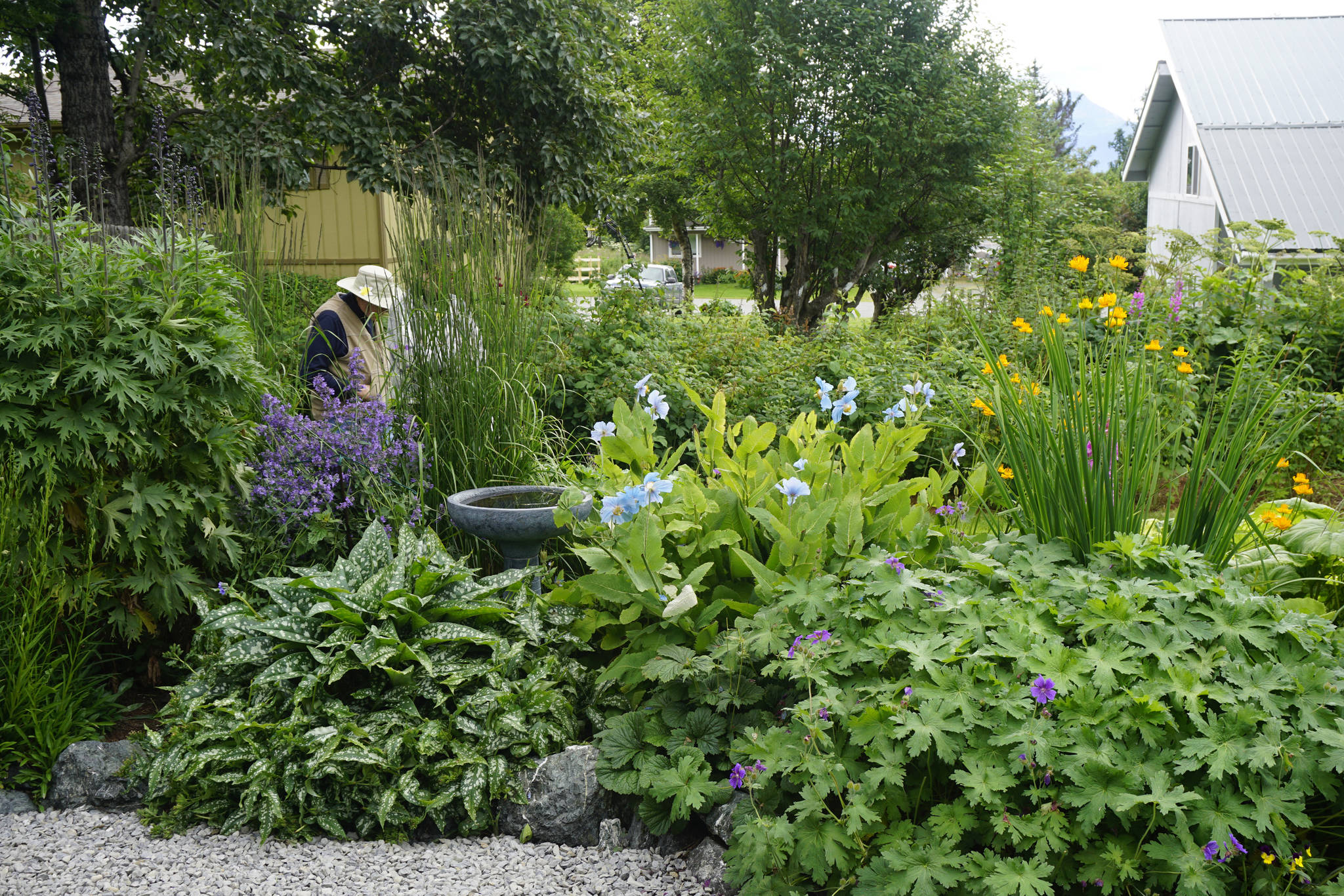More than 10 years after its last edition, the Homer Garden Club in December released an updated and expanded book on gardening from Ninilchik south. Now in its fourth edition, “Kachemak Cultivating from Seaside to Summit: A Guide to Successful Gardening on Alaska’s Southern Kenai Peninsula” provides the most comprehensive gardening reference for the area on everything from planting vegetable gardens to meticulously landscaped home showcases.
“We think we’ve done a pretty good job of what we know so far,” said assistant editor Francie Roberts. “… We had some of our best and brightest gardeners working on the book.”
Including Roberts and lead editor Roni Overway, 36 gardeners from all talents and disciplines contributed.
“There were many, many people who did it,” Roberts said. “This was a group effort.”
The authors include commercial farmers like Donna Rae Faulkner and Don McNamara, landscape designers like Brenda Adams, but also gardeners frequently featured in the Homer Garden Club’s annual garden tour.
“There’s some fabulous work that went into that book,” said writer and gardener Jan Flora, who wrote a new chapter on high tunnels. “I’m really impressed with the talent in this town.”
That includes environmental scientist Tony Burgess, who wrote the chapter on soils and whose experience included helping to design Biosphere II, an epic attempt to build a closed ecological habitat.
Priced at $25, the 253-page “Kachemak Cultivating” also is the first edition to be published as a softbound, large-format paperback book.
Previous editions were spiral bound.
With a thorough index, the book includes black-and-white illustrations by the late R.W. Tyler and a color cover by Homer and Halibut Cove artist Jan Peyton.
An 18-month project, Roberts said the project started with contributors going through old chapters and updating them and adding new information.
“It was a lot bigger job than I imagined it would be,” Roberts said. “I thought re-editing the book would not take a long time. It took a lot of time. People kept saying, ‘Wait a minute — I know more things to add here.”
The guide has been rewritten to reflect new scientific understanding, new methods of gardening like high tunnels, and changes in where plants grow now. Roberts said “Kachemak Cultivating” isn’t looking at climate change itself, but how “something grows that didn’t use to grow here.”
The area considered brings in a lot of microclimates — the “from seaside to summit” in the title. It covers plants and growing areas from the Homer Bench to Diamond Ridge and Skyline Drive.
“Our book is really trying to, if you want to focus on gardening in the Homer area, how would you be successful as a gardener?” Roberts said.
Flora wrote her high tunnel chapter by pulling on her own experience and that of the Homer Facebook High Tunnel Group, now up to 1,700 members. High tunnels became hugely popular on the lower peninsula once farmers realized they could extend growing seasons by two months or more.
The metal-frame, plastic covered buildings are essentially low-cost, large-scale greenhouses.
“I had to leave out way more than I know,” Flora said of her chapter.
The voice of “Kachemak Cultivating” is really that of the gardeners, Flora said.
“It’s the ‘gals talking over the garden fence’ voice,” she said. “… The tone of the book, this version, I just really like it. People have lost their self-consciousness. They know who their audience is. It’s their friends.”
“Kachemak Cultivating” contains information on all aspects of gardening, including planting trees and shrubs, planting flower gardens, and planting berry bushes. It has information on managing pests from big moose to bothersome insects.
“We’re pretty diverse in our gardening interest,” Roberts said.
With an initial printing of 200 copies, “Kachemak Cultivating” is available for sale at the Homer Bookstore and The Wagon Wheel.
It also is available at Homer Garden Club meetings.
The club meets from 2-4 p.m. the third Sunday of every month at the Best Western Bidarka Inn, with its next meeting at 2 p.m. this Sunday, 2 p.m. Sunday, Feb. 17. Local Cooperative Extension agent Casey Matney will speak on composting.
Reach Michael Armstrong at marmstrong@homernews.com.

